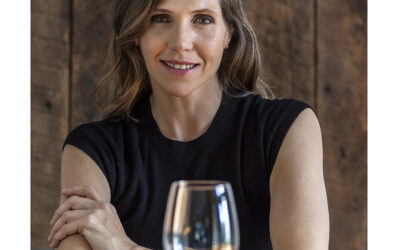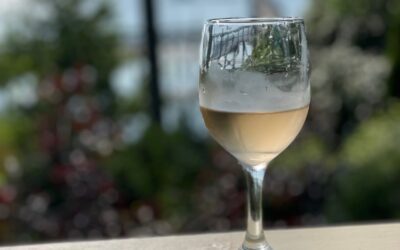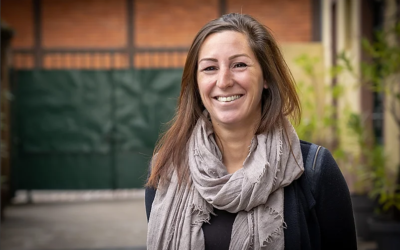Alice Tétienne is a woman of substance, essence, and purpose. Tétienne captures and defines the very essence of Champagne one bottle, one cuvée and one release at a time.
A native of Champagne, France, she was (perhaps)naturally destined for the bright and sparkling professional journey she’s been on.
Making champagne her life’s work, Tétienne certainly carries an impressive dossier.
She made her professional debut in the marketing department of Laurent-Perrier before shifting to oenology and landing a job, first, at Nicolas Feuillatte- one of the biggest cooperatives – and then at Krug Champagne where she was responsible for vineyard relations. In 2020 she won the “Best Winemaker of the Year” award by Trophées Champenois.
She joined Champagne Henriot, one of the few remaining family-owned Champagne houses, as the first female cellar master in 2020 carrying on a long-lasting legacy of women leaders. She now adds her name to the illustrious roster of female game-changers who have shaped over the years the standing, prestige, and savoir faire of the Henriot House.
Many of us tend to forget that the history of Champagne is vastly filled with historical female figures who upon becoming widows singlehandedly transformed themselves into agents of change and effectively helped defined the Champagne industry as we know it today.
Apolline Henriot is one of them.
Apolline Henriot, young widow of Nicolas Henriot, founded Maison Henriot in 1808 with the desire to shed light on her lands through a unique Champagne reflective of her vineyards.
Her endeavor led to the crafting of the first Henriot cuvée, now known as Henriot Brut Souverain, the signature style of the house.
The strong female influence continued with Marie Marguet, who in 1880 married Apolline Henriot’s great grandson, Paul Henriot. The union exponentially expanded Henriot’s vineyards from the Montagne de Reims to the Côte des Blancs thus giving Henriot Champagne its identity with Chardonnay always in the limelight.

If Champagne is deeply embedded in the Henriot family’s legacy, it is in Alice Tétienne’s blood – and not just because her grandmother owned a vineyard next to one of Apolline’s original vineyards in the Montagne de Reims.
With much of her life spent in the vineyards, Alice is a cellar master who is intrinsically connected to nature, the soil, the vines, and the diversity of terroirs. Her winemaking craft is as much a science as it is an absolute work of art. And making outstanding champagnes is only part of her effervescent story.
She is also leading the charge for a more sustainable Champagne.
It was an absolute treat to have the chance to chat with Alice Tétienne and talk about the legacy of the Henriot family, the achievements of the past, the current projects at hand, and the stories behind some of the emblematic Henriot Cuvées. Of course, one cannot talk about Champagne without addressing future challenges naturally imposed by climate change.

Being born in Champagne, France, was it naturally an evident choice to work in the Champagne Industry?
Yes absolutely. The decision was organic. It was natural for me as I have always related to the sector that allows such a vast majority of people here in Champagne to live.
What motivated you to pursue studies in Oenology?
It was viticulture that I was first passionate about and drawn to. I love to be in the vineyards, to follow the evolution of nature and to see the impact climate has on the vines. But when you’re in the vineyards, the only way to measure all your actions on the vine is through vinification. That is the only way to read your terroirs and that is why I decided to be become oenologist then cellar master.
You made your professional debut in the marketing department at Laurent Perrier – a position more behind the desk than in the vineyards – What has that experience brought you?
I might have specialized in viticulture then oenology, but communication is essential to make our champagnes shine around the world and to understand the business dynamics. I essentially wanted to add to my arsenal and discover the field of communication. This experience was a discovery approach to become more polyvalent, but it was never about making a permanent career.
From Laurent-Perrier, Krug to now Henriot – all family run Champagne Houses – was it a deliberate choice?
Yes! Today it is important for me to be working within this type of business structure because it allows for a stronger emotion and connection directly tied to the historic heritage attached to these Houses. I was also part of the Nicolas Feuillate team, which is a different organization and business model, but still as interesting because it is representative of another part of the Champagne world. It’s a cooperative with many people involved at every stage. It is important to know how to discover and respect every dimension of the Champagne industry.
You joined Henriot as a Cellar Master in 2020. Has the pandemic affected your work?
No, it didn’t, even though I would have wished for things to happen differently. The pandemic allowed me to take the time to be with our teams in the vineyards and to work with them. Viticultural activities never stop (nature doesn’t wait) and that is the most critical and sensitive part of my work.
Henriot is a Champagne House where women have always played an important role.
The House was founded by Apolline Henriot in 1808 and, today, you are the first female cellar master to leave her marks. What does the Henriot legacy mean to you?
Not only was the house founded by a woman (Apolline in 1808) but it is another woman, Marie Marquet, who brought about a crucial transition in the history of the House in 1880 when she married a Henriot.
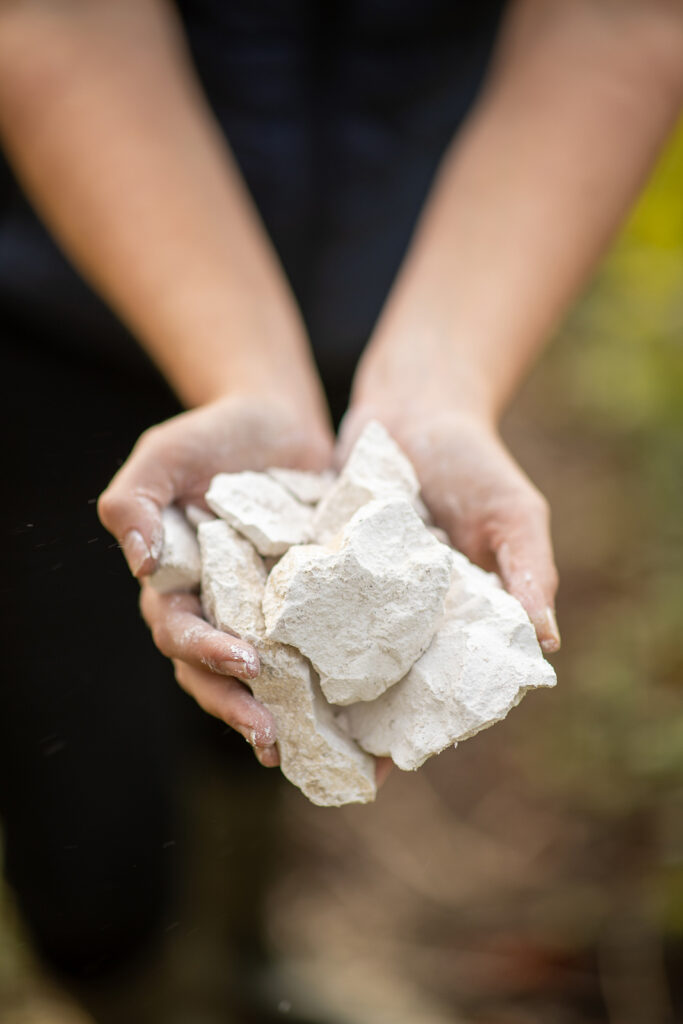
The dowry she brought with her included 3 vineyards in the Côte des Blancs (Chardonnay) that completed and balanced the other 3 vineyards in the Montagne Reims (Pinots Noirs) which Apolline owned. The house, as a result, predominantly produced Chardonnay.
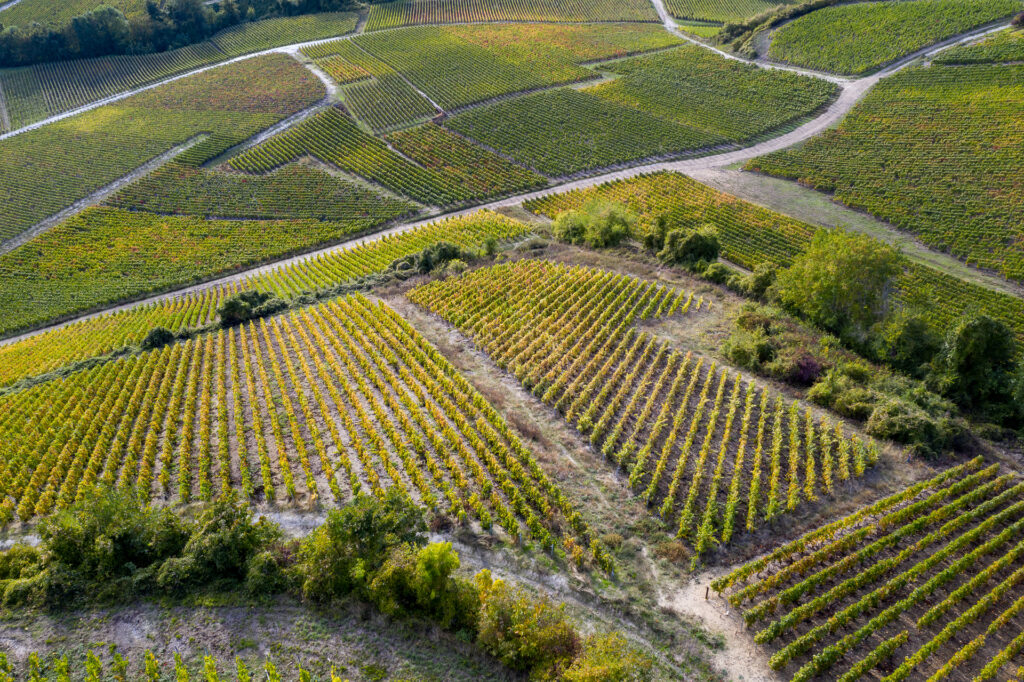
I am indeed a female cellar master and for me this marks the continuity of the house’s legacy.
I am very attached to this heritage, which inspires respect and the desire to sustain the Henriot patrimony through the crafting of Champagnes that reflect a historic vineyard.
Although there is a new generation of women in Champagne making waves, the Champagne industry vastly remains dominated by men. What place do women have in Champagne? Have we made progress?
We talk a lot about the role and place of women in Champagne, but women have always been an integral part of Champagne and its history. Many of them have started Champagne Houses.
They were less in the spotlight than now, but they were present and actively involved, notably in times of war. They were the ones who took the reins and help their respective houses stay afloat to ensure the continuity of the production of champagne bottles while men were in the trenches.
Women are present almost everywhere today. They show up in huge numbers in schools across Champagne. They are not necessarily making headlines for being crowned the title of Chéffe de Cave, but they are part of tasting committees and participate in many other important functions. Diversity is what we need to focus on. We need ides and innovations to make Champagne shines. To do that, we need diversity of people and naturally diversity of gender.
The Henriot Hemera Cuvée owes its name to a Greek goddess. How was this Cuvée born and what was the impetus behind it?
At the end of the 19th century, the Henriot Vineyard estate continues to develop and expands to the Cote des Blancs with the addition of Marie Marguet’s vineyards. At that point the House is comprises 6 crus which the family called the historical founding crus: Avize, Chouilly and Mesnil sur Oger in the Côte des Blancs, and Mailly Champagne, Verzy, Verzenay in the Montagne de Reims. The family then decided to create a cuvée that would blend all 6 crus in equal parts. Hemera is the continuity of this cuvée, which got its new name in 2005.
This Greek goddess is the goddess of light inspired by a fresco from the 19th century belonging to the Henriot family. We talk a lot about putting the light on our terroirs, so it was an evident name for this cuvée.
Many independent growers put the accent on “Terroir”. Apolline Henriot started the house with that philosophy inspired by the famed text written by her great-uncle Chanoine Jean Godinot “Manière de Cultiver la Vigne et de faire le Vin en Champagne” (How to Manage a Vineyard and Make Wine in the Champagne Region).
What does the word “Terroir” mean to you?
The concept of Terroir and its dimension has been anchored in the Henriot genes since the inception of the house. Apolline early on wanted to represent her vineyards by assembling all the different crus (villages) part of her estate. That means that already back then the diversity of terroirs was put center stage.
The definition of “terroir” revolves around 3 pillars: 1) one specific geographical origin; 2) a climate specific to the geographical zone and to the year of viticulture; 3) man’s intervention and participation in the viticultural choices, notably the choice of grape varieties and the understanding of the typology of the vines implanted on that specific spot.
Historically, Champagne Houses have elaborated champagnes by blending years and crus but to achieve these blends diversity of terroir is essential. It is the case for Henriot with the 29 crus that compose our vineyards. Growers today craft terroir-driven cuvées and that is the magic of Champagne. Focusing on very specific crus and parcels, we’re able to craft some champagnes that showcase the diversity of our terroirs and make us shine around the world. These champagnes also reflect the savoir-faire of Champagne and evidently, of Henriot. Our last cuvée L’Inattendue exemplifies that very concept because when we go through the tasting exercise of our clear wines from our 29 crus and discover the different personalities and characters to proceed with the blend, there is always one distinct terroir (wine) that stands out and creates an emotion and the immediate desire to share it with the rest of the world. For the first edition of L’Innatendue, it was the terroir of Avize in 2016 that stood out.
Upon your arrival at Henriot you immediately launched, along with Gilles Larouzière Henriot, the project called “Alliance Terroirs.” Can you tell us more about this environmental endeavor?
What are the measures taken by Maison Henriot to adapt to climate change?
This project was created in 2020 and centers around crucial 3 pillars 1) the knowledge of the vineyard and its origin. It is necessary for us to understand our terroirs by ways of analysis of the soils and analysis of the climate each year. We must be on observation mode all the time because technologies evolve rapidly. This first pillar allows us to answer to the second one: 2) adjusting viticultural practices according to our various and very different terroirs. The objective is to have as many viticultural methods as parcels because we know that each parcel has its own proprieties and specific DNA. That allows us to act with more precision, which brings us to our third pillar: 3) championing more sustainable vineyard practices in Champagne committing to a series of positive objectives designed to reduce our environmental footprint.
Champagne Henriot has proactively reassessed their practices and methodology to effectively respond to the menace of a rapidly changing climate and warming planet.
There are specific environmental certifications in Champagne. Henriot’s vineyards are certified VDC and HVE and are converting to bio. Also, within our own vineyards and those of our partners, we provide advice and resources to act responsibly to minimize the pressure of viticulture practices on the environment. Certification is not an end in itself, but a way to formalize things and set a framework.
You wrote a dissertation on the role of the Meunier grape (the black sheep of Champagne).
How important is Meunier and how do you use it?
Meunier is a historical grape in Champagne and represents one third of the total planting.
Hence it holds as much importance as the other two grapes, Chardonnay and Pinot Noir. It is a beautiful grape which like all other grapes is unique depending on the terroir it is grown on.
At Henriot, Meunier is largely a minority only because historically our vineyards have been in the Montagne de Reims and Côte des Blancs, which are not typically Meunier driven terroirs. However, we do have some Meunier (10%) and are delighted to exclusively use it in our house cuvée Brut Souverain. Like the other grapes we use it in our blend depending on the tasting.
All our tastings are blind tastings, so our approach is not based on grape variety but on specific sectors.
Brut Souverain was created by Apolline Henriot and is the house’s emblematic cuvée. How would you define it?
It is the most historical cuvée of Henriot, created in 1808 at the inception of the house.
It also captures the current picture of Henriot’s vineyards, exactly as Apolline envisioned it.
Brut Souverain we express all our terroirs because that was the intention of Apolline Henriot, who founded the house in 1808. She was the daughter of winegrowers and was herself a passionate winegrower and wanted to showcase her lands
At the onset of the house, there was 3 crus and today there’s 29 crus. It is, as well, a cuvée that represents the house’s history over the years because it is made of a blend combining several years of reserve thanks to our library of reserve wines built in the 1970s.
What legacy do you hope to leave in the history of Champagne Henriot and the overall Champagne world?
My goal is to carry forth the history and legacy of the house and its vineyards adhering to the same philosophy Apolline had through the years crafting some of the House’s historic cuvées. But I also want to have a strong environmental approach of inclusion and focus on sustainable vineyard practices to reduce the house’s environmental footprint. I also want to contribute to the sustainability of the Champagne vineyards in general. Acting on our scale allows us to act at a collective level. For instance, we work with local organizations like the CIVC. We provide them data and help them acquire a global knowledge and understanding of the Champagne vineyards.
What is your most memorable champagne moment?
There is a tradition in Champagne when a new Chef de Cave joins a house where he/she gets to taste all the bottles in the cellar. It is an unbelievable chance and an exceptionally unique treat because it’s a real journey back in time through the history of the house. I was able to taste all the vintages from 1921 to today and had quite an emotional thought for all the Henriot generations who crafted these cuvées. I timed traveled into the past to imagine what these harvests were like.
For more information about Henriot go to: https://www.champagne-henriot.com/en/

